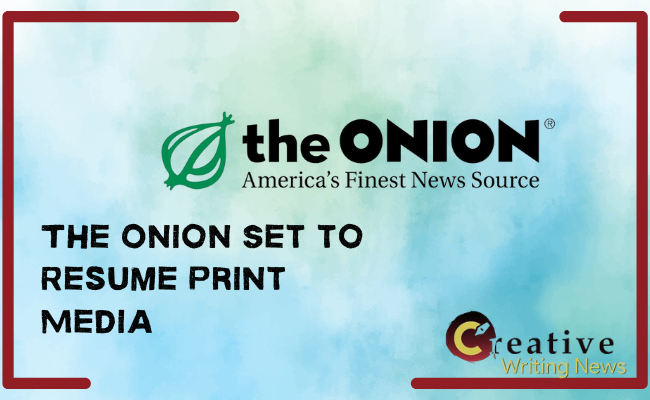Writing Tips: The Controversial Aspects Of Story Design 3
The long awaited concluding parts of Charles Opara’s articles are finally here! You’ve been waiting for it, I know, I know. I have split this article into two parts so you don’t get weary and miss out on these golden words. Don’t forget to read the final part!
BY CHARLES OPARA
If you missed Part 2, click to read
Stepwise Story Crafting According to John Truby
How do you find the designing principle in your story?
You find the designing principle by teasing it out of the simple one-line premise you have before you.
Don’t make the mistake most make. Instead of coming with a unique designing principle, they pick a genre and impose it on the premise and then force the story to hit the beats (events) typical of that genre. The result is mechanical, generic, unoriginal fiction.
There are many possible designing principles or forms that you can glean from your premise (the designing principle is neither one per idea nor is it fixed or predetermined) and by which you can develop your story.
Each gives you different possibilities of what to say, and each brings inherent problems that you must solve.
Step 1. Write the premise line for the story you plan to write.
Step 2. Look for What’s Possible in the Premise Line
“One of the biggest reasons writers fail at the premise stage is that they don’t know how to spot their story’s true potential. This takes experience as well as technique. What you’re looking for here is where the idea might go, how it might blossom. Don’t jump on a single possibility right away, even if it looks really good.
Key Point: Explore your options. The intent here is to brainstorm the many different paths the idea can take and then to choose the best one.
One technique of doing this is to see if anything is promised by the idea. Some ideas generate certain expectations, things that must happen to satisfy the audience if this idea were to play out in a full story. These ‘promises’ can lead you to the best option for developing the idea.
A more valuable technique for seeing what’s possible in the idea is to ask yourself, “What if…?” The ‘what if’ question leads to two places: your story idea and your own mind. It helps you define what is allowed in the story and what is not. It also helps you explore your mind as it plays in this make-believe landscape.
The point here is to let your mind go free. Don’t censor or judge yourself.”
Step 3: Identify the Story Challenges and Problems
Each story has its own unique set of rules, or challenges, as well. These are particular problems that are deeply embedded in the idea, and you cannot escape them. Nor do you want to.
Most writers, if they identify the problems at all, do so after they’ve written the complete story. That’s fat-too late.
The trick is to learn how to spot inherent problems right at the premise line.
Mastering the key techniques of character, plot, theme, story world, symbol, and dialogue, will help you dig out the difficulties in any idea.
Example
The Great Gatsby
Fitzgerald’s challenge is to show the American dream corrupted and reduced to a competition for fame and money. His problems are just as daunting. He must create narrative drive when the hero is someone else’s helper, make the audience care about shallow people, and somehow turn a small love story into a metaphor for America.
Beloved
The main challenge for Toni Morrison is to write a tale of slavery in which the hero is not portrayed as a victim. An ambitious story like this has numerous problems that must be solved: keeping the narrative drive in spite of constant jumps between past and present, making events in the distant past seem meaningful to an audience today, driving the plot with reactive characters, showing the effects of slavery on the minds of the people who lived it, demonstrating how its effects continue to punish years after the slavery is over.
Step 4: Find the Designing Principle
Given the problems and the promises inherent in your idea, you must now come up with an overall strategy for how you will tell your story. Your overall story strategy, stated in one line, is the designing principle of your story.
The designing principle helps you extend the premise into deep structure.
Key Point: The designing principle is what organises the story as a whole.
It is the internal logic of the story, what makes the parts hang together organically so that the story becomes greater than the sum of its parts. It is what makes the story original.
The designing principle is difficult to see. And in truth, most stories don’t have one. They are standard stories, told generically. That’s the difference between a premise, which all stories have, and a designing principle–which only good stories have.
The premise is concrete; it’s what actually happens.
The designing principle is abstract; it is the deeper process going on in the story, told in an original way.
Designing principle = story process + original execution
The designing principle is the synthesising idea, the shaping cause of the story. It’s what internally makes the story a single unit and what makes it different from all other stories.
Key Point: Find the designing principle, and stick to it. Be diligent in discovering this principle, and never take your eye off it during the long writing process.
Step 5. Determine Your Best Character in the Idea
Once you have a lock on the designing principle of your story, it’s time to focus on your hero.
Key Point: Always tell a story about your best character.
“Best” doesn’t mean “nicest”. It means “the most fascinating, challenging and complex,” even if that character isn’t particularly likable.
The reason you want to tell a story about your best character is that this is where your interest, and the audience’s interest, will inevitably go. You always want this character to drive the action.
The Ideas Represented In This Article are Purely Charles Opara’s.




